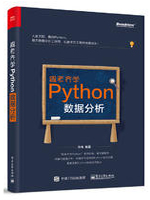为找教程的网友们整理了Python相关的编程文章,网友谢温文根据主题投稿了本篇教程内容,涉及到Python、字符串、文本、Python实现简单文本字符串处理的方法相关内容,已被775网友关注,相关难点技巧可以阅读下方的电子资料。
Python实现简单文本字符串处理的方法
这篇文章主要介绍了Python实现简单文本字符串处理的方法,涉及Python针对文本字符串的切割、计算、转换等相关操作技巧,需要的朋友可以参考下
本文实例讲述了Python实现简单文本字符串处理的方法。分享给大家供大家参考,具体如下:
对于一个文本字符串,可以使用Python的string.split()方法将其切割。下面看看实际运行效果。
mySent = 'This book is the best book on python!' print mySent.split()
输出:
['This', 'book', 'is', 'the', 'best', 'book', 'on', 'python!']
可以看到,切分的效果不错,但是标点符号也被当成了词,可以使用正则表达式来处理,其中分隔符是除单词、数字外的任意字符串。
import re
reg = re.compile('\\W*')
mySent = 'This book is the best book on python!'
listof = reg.split(mySent)
print listof
输出为:
['This', 'book', 'is', 'the', 'best', 'book', 'on', 'python', '']
现在得到了一系列词组成的词表,但是里面的空字符串需要去掉。
可以计算每个字符串的长度,只返回大于0的字符串。
import re
reg = re.compile('\\W*')
mySent = 'This book is the best book on python!'
listof = reg.split(mySent)
new_list = [tok for tok in listof if len(tok)>0]
print new_list
输出为:
['This', 'book', 'is', 'the', 'best', 'book', 'on', 'python']
最后,发现句子中的第一个字母是大写的。我们需要同一形式,把大写转化为小写。Python内嵌的方法,可以将字符串全部转化为小写(.lower())或大写(.upper())
import re
reg = re.compile('\\W*')
mySent = 'This book is the best book on python!'
listof = reg.split(mySent)
new_list = [tok.lower() for tok in listof if len(tok)>0]
print new_list
输出为:
['this', 'book', 'is', 'the', 'best', 'book', 'on', 'python']
下面来看一封完整的电子邮件:
内容
Hi Peter, With Jose out of town, do you want to meet once in a while to keep things going and do some interesting stuff? Let me know Eugene
import re
reg = re.compile('\\W*')
email = open('email.txt').read()
list = reg.split(email)
new_txt = [tok.lower() for tok in list if len(tok)>0]
print new_txt
输出:
复制代码 代码如下:
['hi', 'peter', 'with', 'jose', 'out', 'of', 'town', 'do', 'you', 'want', 'to', 'meet', 'once', 'in', 'a', 'while', 'to', 'keep', 'things', 'going', 'and', 'do', 'some', 'interesting', 'stuff', 'let', 'me', 'know', 'eugene']
相关推荐:
Python实现获取前100组勾股数的方法
以上就是Python实现简单文本字符串处理的方法的详细内容,更多请关注码农之家其它相关文章!


















